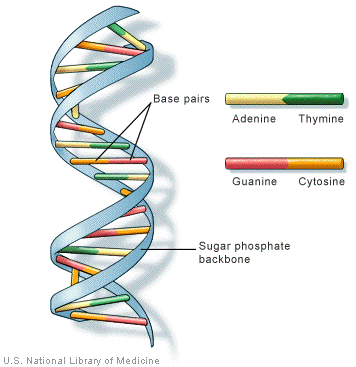- Adenine (A)
- Thymine (T)
- Guanine (G)
- Cytosine (C)
Adenine always pairs up with thymine, guanine always pairs up with cytosine. The order in which these are paired in is what makes up the 'coding' of an organism.
(Virtual flashcards on this topic can be found here, or click 'inheritance flashcards' on the right hand side menu)

No comments:
Post a Comment